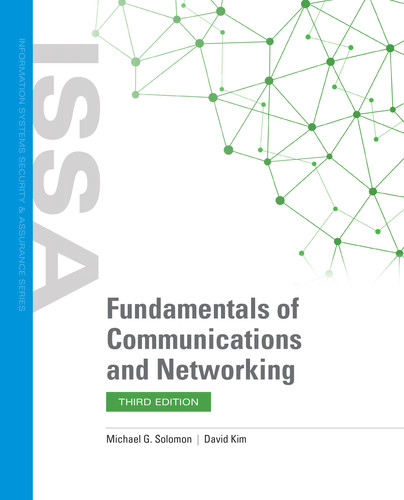CHAPTER SUMMARY
This chapter covers a wide range of related topics—from monitoring and auditing networks to identifying and handling incidents. Understanding your network’s current state and its ability to recover from incidents is an important skill for technicians and management.
It isn’t enough to simply sample performance data. You need to have a deep enough understanding of your network’s normal operation to recognize when things aren’t right and have well-thought out plans to follow to respond in such cases. Restoring normal operation demands awareness to identify abnormal behavior and plans to react.
KEY CONCEPTS AND TERMS
CHAPTER 13 ASSESSMENT
- Which of the following was first released in 2014 in response to a U.S. Presidential Executive Order calling for increased cybersecurity?
- NIST CSF
- ISO 27002
- ITIL
- COSO
- Which of the following uses business rules to classify sensitive information to prevent unauthorized end users from sharing information?
- DLP
- IDS
- Logging
- Clipping
- Which of the following is a type of wireless encryption you should not use on a wireless network due to its lack of security?
- WPA
- IPSEC
- PPP
- WEP
- What type of error triggers an alert when a threat really doesn’t exist?
- False negative
- True negative
- False positive
- True positive
- What configuration setting can you adjust to avoid Type I errors?
- Clipping level
- Heuristic ruleset
- Encryption technique
- Logging level
- Which industry standard requires that organizations keep logs for at least one year?
- HIPAA
- SOX
- NIST
- PCI DSS
- What management software provides a common platform to capture and analyze log entries?
- ERP
- SIEM
- Monitor
- HIDS
- Which of the following is any action that results in a violation of, or threatened violation of, the security policy?
- Event
- Threat
- Vulnerability
- Incident
- What is the first step in properly responding to an incident?
- Identification
- Containment
- Eradication
- Communication
- What type of plan defines how an organization would respond to a power outage that lasts two days?
- BIA
- BCP
- DRP
- IPS
- What type of plan defines how an organization would respond to a fire that destroys the building housing the organization’s data center?
- BIA
- BCP
- DRP
- IPS
- Which activity identifies processes that are critical to a business’s ability to carry out its core operations?
- BIA
- BCP
- DRP
- IPS
- BCP stands for:
- Business continuity planning
- Business career planning
- Business continuity policy
- Business continuity practices
- DRP stands for:
- Disaster recovery planning
- Disaster recovery procedures
- Design recommendation policy
- Design review policy
- An organization must choose between BCP and DRP as an approach for dealing with unplanned events affecting their telecommunications infrastructure.
- True
- False
..................Content has been hidden....................
You can't read the all page of ebook, please click here login for view all page.
